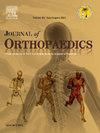Rethinking tumor viability as prognostic factor in soft tissue sarcoma
IF 1.5
Q3 ORTHOPEDICS
引用次数: 0
Abstract
Background
Histopathologic assessment of tumor viability has emerged as a potential predictive factor of outcomes in various cancers. This study evaluates the prognostic significance of viability in high-grade soft tissue sarcoma while accounting for different adjuvant regimens and clinical variables.
Methods
A retrospective chart review was conducted on 147 patients surgically treated for high-grade soft tissue sarcoma between 2010 and 2021 at a single institution. Perioperative, clinical and surveillance data were collected. Tumor viability was determined through histopathologic analysis by a board-certified pathologist.
Results
No significant differences in clinical variables were observed between groups with ≤10 % and >10 % tumor viability. Neoadjuvant treatments, tumor grade, size, and depth did not independently affect tumor viability. There was no statistically decreased risk of local recurrence in the group with ≤10 % viability compared to the group with >10 % viability (HR = 1.19, 95 % CI [0.57,2.50]) (p = 0.64). Margin status was the only variable that significantly increases the risk of LR on multivariate analysis.
Conclusion
This cohort suggests that neoadjuvant radiotherapy, chemotherapy, or their combination did not influence tumor viability predictably. Notably, tumors without neoadjuvant treatment exhibited a high rate of necrosis, potentially confounding the interpretation of treatment effect. Other factors such as tumor type may play a more significant role in the cause of tumor necrosis than originally thought. Pathologic tissue response continues to offer value for the management of STS, but these findings underscore the need for further investigation into tumor viability in soft tissue sarcoma, targeting specific treatments analyzed in large collaborative studies.
重新思考作为软组织肉瘤预后因素的肿瘤存活率
本文章由计算机程序翻译,如有差异,请以英文原文为准。
求助全文
约1分钟内获得全文
求助全文
来源期刊

Journal of orthopaedics
ORTHOPEDICS-
CiteScore
3.50
自引率
6.70%
发文量
202
审稿时长
56 days
期刊介绍:
Journal of Orthopaedics aims to be a leading journal in orthopaedics and contribute towards the improvement of quality of orthopedic health care. The journal publishes original research work and review articles related to different aspects of orthopaedics including Arthroplasty, Arthroscopy, Sports Medicine, Trauma, Spine and Spinal deformities, Pediatric orthopaedics, limb reconstruction procedures, hand surgery, and orthopaedic oncology. It also publishes articles on continuing education, health-related information, case reports and letters to the editor. It is requested to note that the journal has an international readership and all submissions should be aimed at specifying something about the setting in which the work was conducted. Authors must also provide any specific reasons for the research and also provide an elaborate description of the results.
 求助内容:
求助内容: 应助结果提醒方式:
应助结果提醒方式:


